Are you tired of the same old hot dogs and marshmallows roasted over your fire pit? Get ready to transform your backyard gatherings into culinary adventures with the power of a fire pit cooking grate! This versatile tool opens up a world of delicious possibilities, allowing you to sear steaks, grill veggies, and even bake pizzas over an open flame.
In this comprehensive guide, we’ll dive into everything you need to know about fire pit cooking grates, from choosing the perfect one to mastering the art of cooking over a crackling fire.
Why You Need a Fire Pit Cooking Grate
- Versatility: Expand your campfire menu beyond the basics. Grill, sear, bake, and even roast with ease.
- Flavor Enhancement: Impart that smoky, wood-fired flavor into your food that’s simply irresistible.
- Easy Cleanup: Most grates are designed for simple cleaning and maintenance.
- Ambiance: There’s something magical about cooking over an open flame that adds a special touch to any gathering.
Types of Fire Pit Cooking Grates
The material of your cooking grate plays a significant role in its performance and longevity. Here’s a quick comparison:
| Material | Pros | Cons |
|---|---|---|
| Cast Iron | Excellent heat retention and even cooking | Can rust if not properly seasoned and cared for |
| Stainless Steel | Durable, resistant to rust, easy to clean | May not offer the same heat retention as cast iron |
Choosing the Perfect Fire Pit Cooking Grate
Consider these factors when selecting your grate:
- Size: Make sure the grate fits comfortably within your fire pit.
- Shape: Round or square? Choose a shape that complements your fire pit and cooking style.
- Material: Cast iron or stainless steel? Weigh the pros and cons based on your needs.
- Price: Grates range in price, so set a budget beforehand.
Top 5 Pit Cooking Grate Recommendations
Absolutely! Here are some top fire pit cooking grate recommendations, along with images and descriptions to make your article even more engaging:
1. Lodge Cast Iron Camp Dutch Oven Cooking Grate
- Material: Cast iron
- Features: Reversible design with flat grilling surface and raised edges for Dutch oven cooking. Pre-seasoned for immediate use.
- Best for: Versatile cooking options, including searing, grilling, and Dutch oven cooking.
- Price Range: $$
2. Liberty Foundry Seasoned Cast Iron Fire Pit Cooking Grate
- Material: Cast iron
- Features: Heavy-duty construction with handles for easy lifting. Available in various sizes.
- Best for: Large gatherings, even heat distribution, and durability.
- Price Range: $$$
3. Camp Chef Professional Fry Griddle
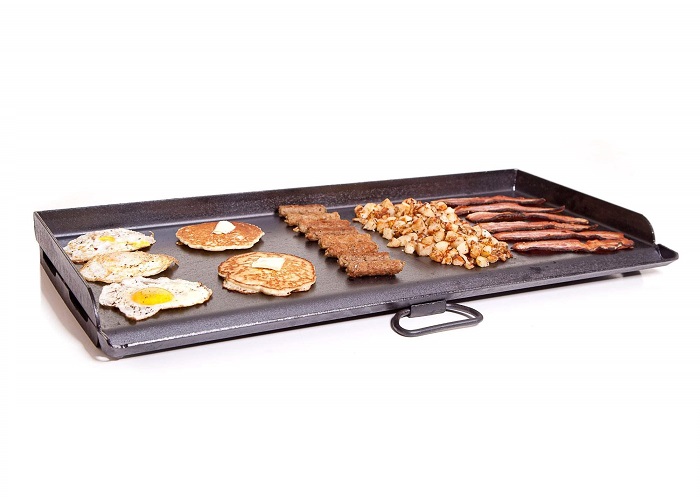
- Material: Heavy-gauge steel
- Features: Large cooking surface, removable legs for easy storage, and a grease management system.
- Best for: Breakfast lovers, large groups, and cooking multiple items at once.
- Price Range: $$$
4. Onlyfire Universal Heavy Duty Cooking Grate
- Material: Stainless steel
- Features: Adjustable height, fits most fire pits, and easy to clean.
- Best for: Versatility, adjustable cooking temperatures, and those who want a stainless steel option.
- Price Range: $$
5. Peterson Real Fyre Cooking Grate
- Material: Steel
- Features: Designed for use with gas logs or fire pits, available in various sizes and finishes.
- Best for: Gas fire pits, a more elegant look, and those who want to match their grate to their fire pit.
- Price Range: $$$
Tips for Choosing the Right Grate
- Measure your fire pit: Make sure you get the right size grate for your pit.
- Consider your cooking style: If you plan on doing a lot of Dutch oven cooking, look for a grate with raised edges.
- Think about your budget: Cast iron grates tend to be more affordable than stainless steel.
- Read reviews: Check out online reviews to see what other users have to say about different grates.
How to Use a Fire Pit Cooking Grate Like a Pro
- Prep Your Fire: Build a hot, even fire with well-established coals.
- Place the Grate: Position the grate securely over the flames.
- Preheat: Allow the grate to heat up before adding food.
- Cook: Start with your proteins, then move on to vegetables and other items. Use tongs or a spatula to flip and move food as needed.
- Adjust Heat: Move food closer to or farther away from the fire to control the cooking temperature.
- Experiment: Have fun trying different recipes and techniques!
Cleaning and Maintaining Your Fire Pit Cooking Grate
- After each use, brush off any food debris with a stiff wire brush.
- For cast iron grates, re-season with oil after cleaning.
- Store your grate in a dry place when not in use.
Fire Pit Cooking Grate Safety
- Always supervise children and pets around a fire pit.
- Use heat-resistant gloves when handling the grate.
- Never leave a fire unattended.
- Follow the manufacturer’s instructions for safe use and maintenance.
Conclusion
Fire pit cooking grates are a game-changer for outdoor enthusiasts. With a little practice, you’ll be whipping up gourmet meals over an open flame that will impress your family and friends. So, grab your grate, fire up your pit, and get ready for a delicious adventure!
Questions and Answers About Using a Fire Pit Cooking Grate
Q1: What types of food can you cook on a fire pit cooking grate?
A1: You can cook a wide variety of foods on a fire pit cooking grate, including meats like steaks, burgers, chicken, and sausages. Vegetables such as corn, bell peppers, and zucchini grill beautifully as well. You can even make more adventurous dishes like grilled pizza or foil packet meals with fish and veggies.
Q2: How do you clean and maintain a fire pit cooking grate?
A2: To clean your fire pit cooking grate, let it cool completely after use. Scrub it with a wire brush to remove any food residue and ashes. For a deeper clean, soak the grate in warm, soapy water, then scrub with a sponge or brush. Rinse thoroughly and dry completely to prevent rust. Regularly oiling the grate with cooking oil can help maintain its condition and prevent rust.
Q3: What are some safety tips for cooking on a fire pit cooking grate?
A3: Safety is crucial when cooking over an open fire. Always keep a bucket of water or a fire extinguisher nearby. Use long-handled tools to avoid burns, and never leave the fire unattended. Ensure the fire pit is stable and on a flat surface, away from flammable materials. Make sure the fire is completely extinguished before leaving the area.
Q4: How do you control the temperature when cooking on a fire pit cooking grate?
A4: Controlling temperature can be challenging but manageable with practice. Start by building a good base of hot coals, which provide steady heat. You can adjust the heat by adding more wood or spreading out the coals for even cooking. Raising or lowering the grate, if possible, also helps control the cooking temperature. Additionally, you can create different heat zones by piling more coals on one side for high heat and fewer on the other for low heat.
Q5: Can you use a fire pit cooking grate for baking?
A5: Yes, you can use a fire pit cooking grate for baking. Items like bread, biscuits, and even pizzas can be baked over a fire pit. Using a cast iron skillet or Dutch oven can help evenly distribute heat and prevent burning. Covering the food with a lid or aluminum foil can create an oven-like environment to ensure thorough cooking.
Q6: What are some popular marinades or seasoning blends for fire pit cooking?
A6: Popular marinades for fire pit cooking include mixtures of olive oil, garlic, herbs (like rosemary, thyme, and oregano), and citrus juices (like lemon or lime). For a spicy kick, try a blend of soy sauce, ginger, garlic, and chili flakes. Dry rubs with paprika, cumin, brown sugar, and black pepper are also great for adding flavor to meats and vegetables.
Q7: How can you prevent food from sticking to the fire pit cooking grate?
A7: To prevent food from sticking, make sure the grate is clean and preheated before adding food. Lightly oil the grate with a high smoke point oil, like canola or vegetable oil, using a brush or a paper towel. Additionally, avoid moving the food too soon; let it sear properly to create a natural release from the grate.
Q8: What are some creative recipe ideas for fire pit cooking?
A8: Creative recipe ideas include:
- Campfire Nachos: Layer tortilla chips, cheese, beans, and your favorite toppings in a cast iron skillet and heat over the fire.
- Grilled Fruit Skewers: Skewer chunks of pineapple, peaches, and strawberries, and grill until caramelized.
- Stuffed Bell Peppers: Fill bell peppers with a mixture of cooked rice, ground meat, and cheese, then grill until the peppers are tender.
- Foil Packet Meals: Combine sliced sausage, potatoes, and vegetables in a foil packet, season well, and cook over the fire.
Q9: What are the benefits of using a fire pit cooking grate compared to other outdoor cooking methods?
A9: Using a fire pit cooking grate offers several benefits:
- Flavor: Cooking over an open flame imparts a unique, smoky flavor that can’t be replicated with gas or electric grills.
- Versatility: Fire pit grates allow for a wide range of cooking techniques, from grilling and searing to baking and roasting.
- Portability: Many fire pit grates are portable and can be used in various outdoor settings, making them ideal for camping trips.
- Experience: Cooking over a fire pit is a communal and enjoyable experience, often enhancing the social aspect of outdoor gatherings.
Q10: What types of firewood are best for cooking on a fire pit?
A10: Hardwoods like oak, hickory, maple, and fruitwoods (like apple or cherry) are best for cooking because they burn hotter and longer, providing consistent heat and a pleasant flavor. Avoid softwoods like pine, which can produce excessive smoke and contain sap that may impart a bitter taste to the food.

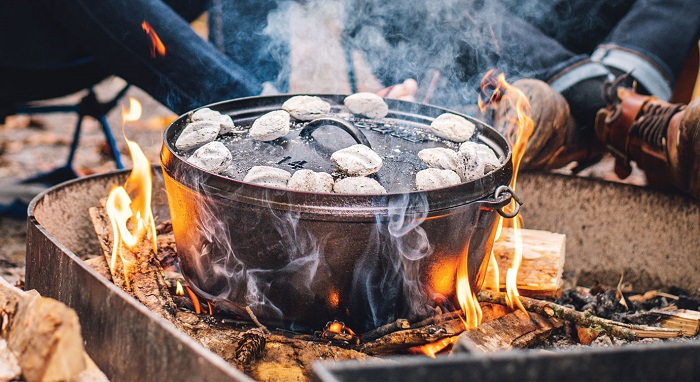
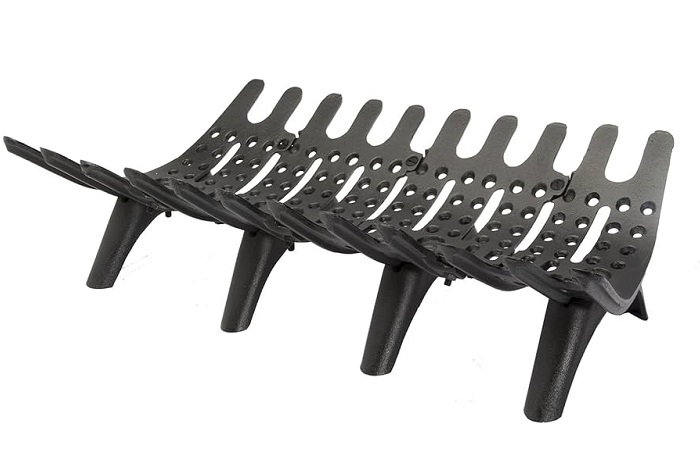
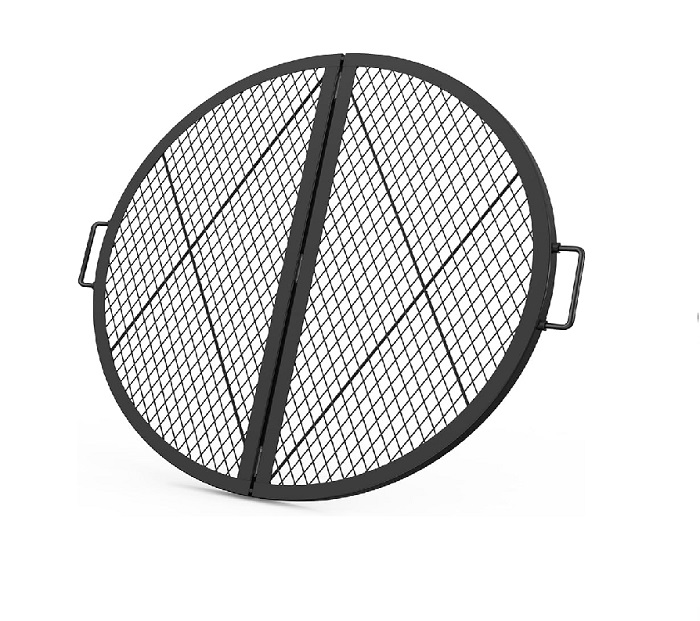
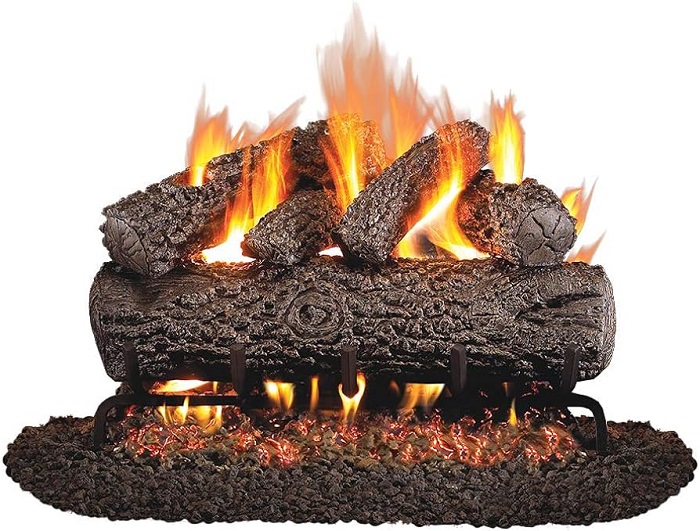
Related Articles :